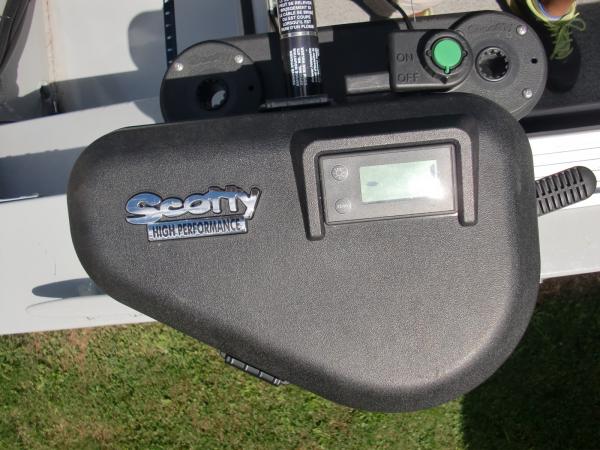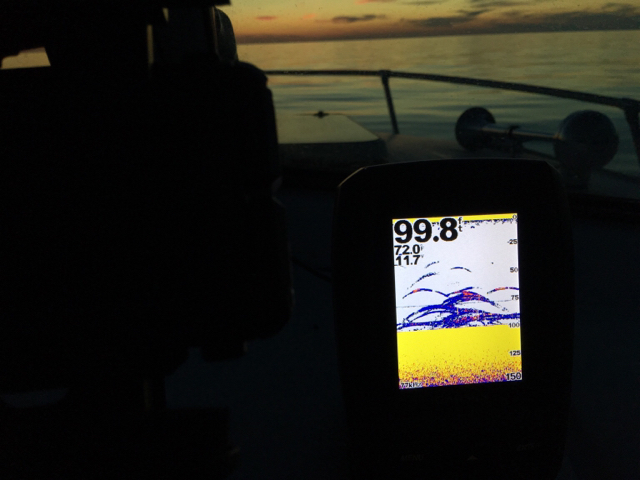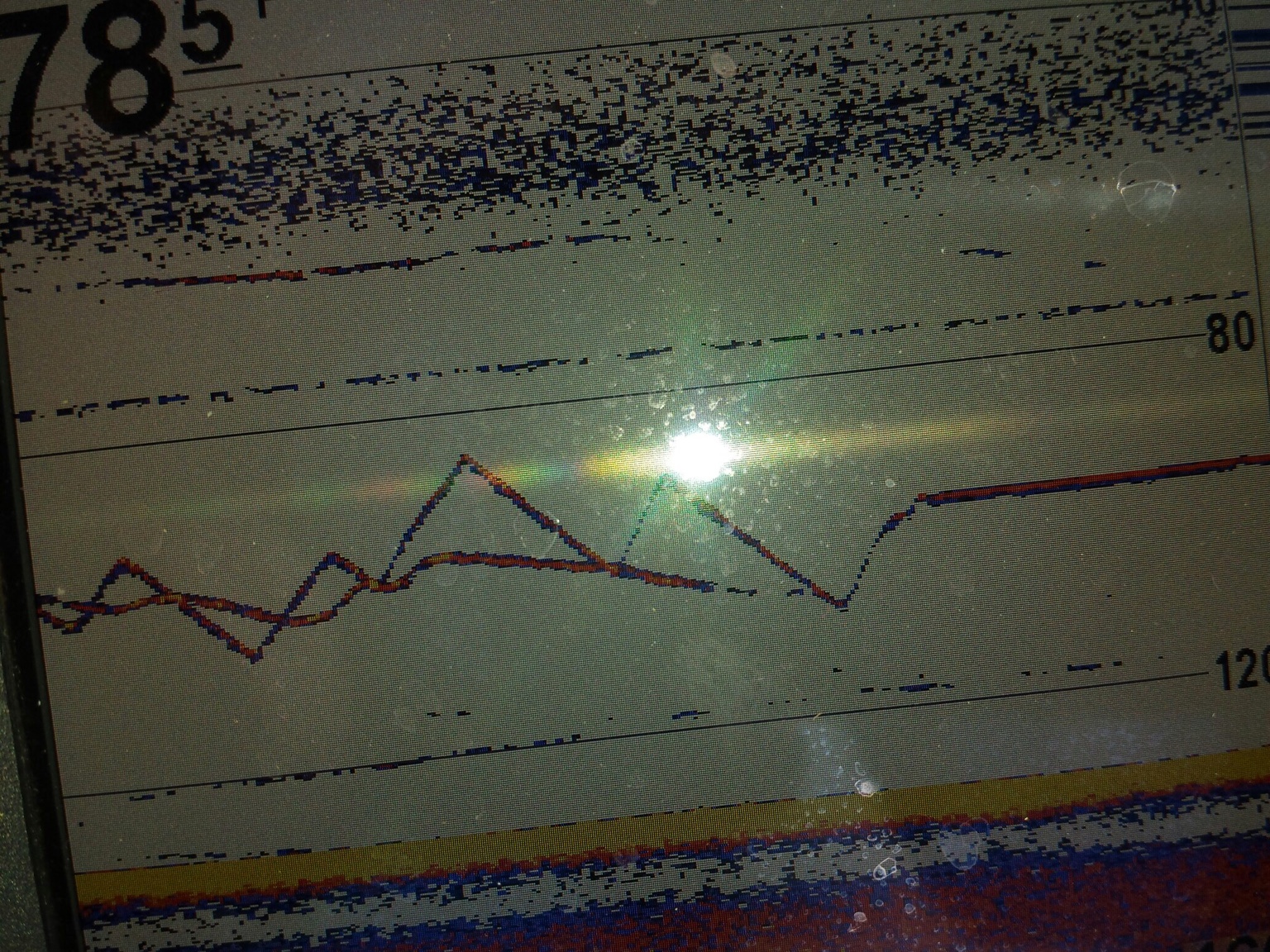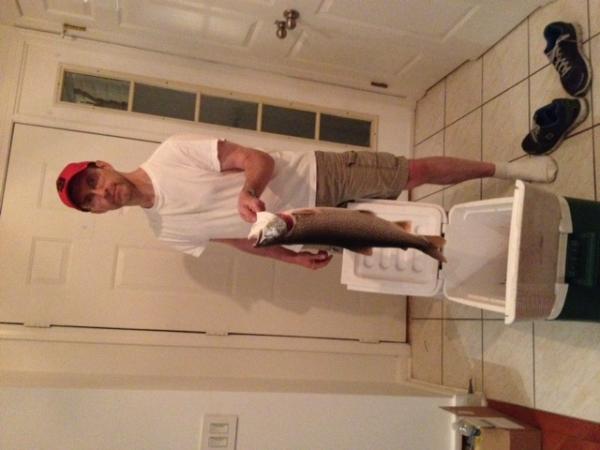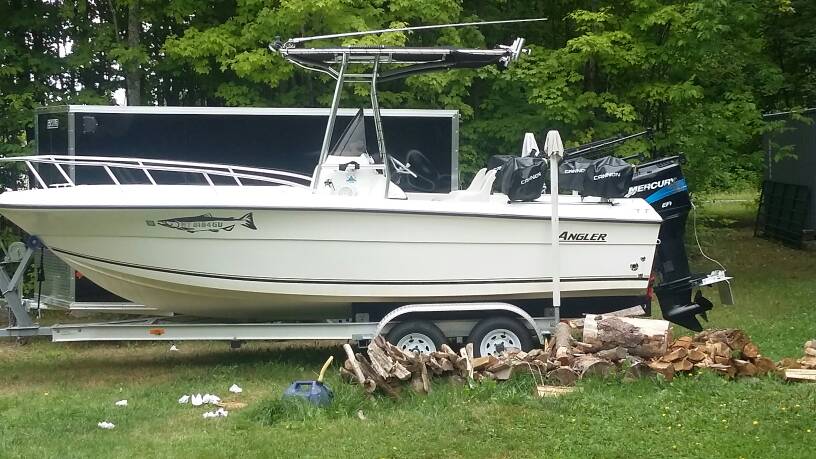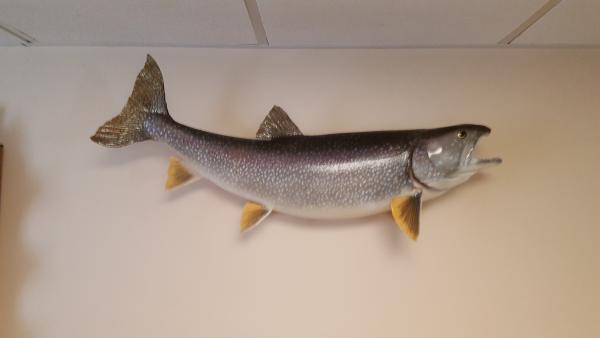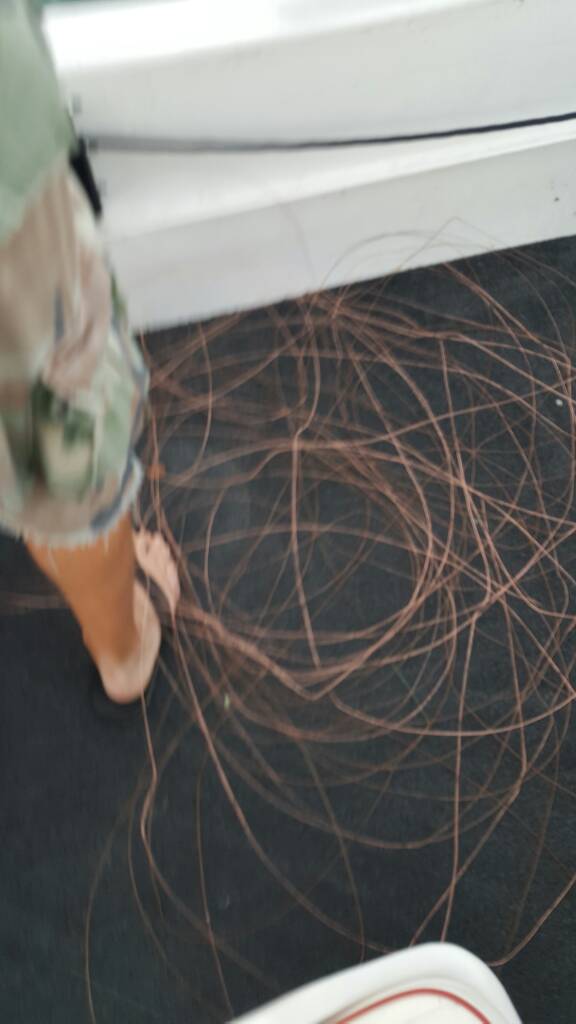-
Posts
13,872 -
Joined
-
Last visited
Everything posted by Sk8man
-
Just an initial questioo: Are you sure you have 200 FEET or Yards on the reels? Usually stuff like Power Pro braid comes in either 150 yards or 300 yd spools in most stores stocking it. Ff you have 200 YARDS (600 ft) it would be the bare minimum lengthwise for the 50 lb. braid for most applications. You could let out a maximum of 250-300 ft and still have the length of a football field for the fish to run (not a whole lot with a big king). You might want to consider using a 124 mm. Deeper Diver as it will get you down the maximum with the least amount of line out (larger and has a heavier weight on it). I'd go with a 30 lb leader with that setup (less likely for a big king to snap off that 30 and 50 combo) with a short mainline.
-
Good point about the non-chlorination. When using live bait I get the ice from the water filter section on the refrigerator and usually I stop at the lake and get lake water in my live well before I get my bait, and put some in a 5 gal pail as well and then add the bait to it and after dumping the bait in the live well I gradually add the ice so as not to shock them. (Luckily I live nearby a lake)
-
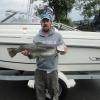
Sold / Closed 2012 Hewescraft ProV 200 hard top aluminum fishing boat 20'
Sk8man replied to wargar's topic in Boats for Sale
-
A lot of things are different now. Fewer fish present, water clarity and color changes etc. I don't think the fish are into "style changes" yet Sometimes I get a kick out of folks "matching" up colors and patterns as if to be "color coordinated". I know a reason is to make it appear that you have smaller ones trailing behind larger ones but I'm not sure even that is a valid rationale.....we tend to humanize things wherever possible in terms of our own preferences. It can be superstitious behavior too (I plead guilty) when something works we tend to keep using it but it may be just that it was close enough to that hungry fish at that point time and appeared "vulnerable"
-
Yeah I can see Kinger now....kicked back stogy in his mouth beer in his paw and sunglasses
-

Sandy 8/8
Sk8man replied to whaler1's topic in New York Fishing Reports - Lake Ontario (South Shore)
Yeah when I was a kid I caught one a little bigger than that in the Canandaigua Outlet outside of Phelps and I set it down in back of my house and I took my little sisters kids type broom and put it near its mouth and it snapped the thing in two. They are nothing to mess with whether in the water or on land -

downrigger help
Sk8man replied to Ohreelyfishing's topic in Questions About Trout & Salmon Trolling?
Yup I often run them 12 -20 ft. again it pays to experiment. I should also note that I frequently run them close to the weight too (4-8 ft) but it also depends on size of flasher and my intended speed. If they are real close to the ball and the speed is too high they do not look right in terms of the action but given the right speed they can look as though the weight and the F/F are a "unit" -

downrigger help
Sk8man replied to Ohreelyfishing's topic in Questions About Trout & Salmon Trolling?
Up to 15 ft for meat but I think most times closer to the weight. F/F personal preference and based on experimentation on a given day and depth is more critical than the sunlight issue as the action of the lure changes and you can run it closer as you go deep. Spoons can be run at any length but keep in mind the action is less the longer you go with many lures and at some point a belly occurs bringing things upward. Usually with most spoons the deeper you go the more action and shorter the lead. Spoons or sticks in shallow water (e.g. in Spring are often used with a longer lead (sometimes approaching 100-150 ft back (e.g. browns) but my preference for the longer ones is to run off boards or outriggers instead of downriggers. -
-
Ed is under pressure to perform with Kinger on board....he'll be spotting the fish up front so Ed better be on his game
-
I know holding pike vertically for any extended length of time (or holding them by the eyes)often kills them when they are released and I suspect it may be a factor with trout or salmon as well.
-
Gambler has it right. In the old days folks used to prick their air bladder with a bait threading needle thinking that letting the air bladder quickly and then sending them back down was all that was needed. It was a bit shortsighted though because it probably takes time for the bladders to "heal" and in the meantime who knows what actually happens to the fish when they sink. I know over the years I have seen a bunch of them either floating or laying on bottom dead where you can see bottom. The only thing I would add is a general consideration regardless of species and that is minimize any handling where possible and always avoid grasping or touching the gill area of the fish if you intend to release it. A lot of times you see folks holding up fish for pics with their hand in the gills and saying they released the fish and you wonder if in fact that fish ever survived regardless of swimming away. Even when handling correctly there may be things happening long term like the removal of the protective slime making them more vulnerable to fungal infections etc. If they are coming out of the shallower cold water (e.g. Spring) you usually don't have to do much and they can be pretty hardy so I use needle nose pliers grasping the down turned hook and release them that way. Obviously it somewhat harder to do with the really big ones.
-
-
Nice going Brian. Those landlocks are not only fun but tasty on the grill as well. I hope to get down there one day soon but have company all next week Save some fish for the rest of us will ya?
-
I've been using balloon rigs for years with sawbellies and shiners and smelt (when they were there ) on the Finger Lakes and at Cape Cod for Stripers with sand eels. It would definitely work on fairly calm days but as mentioned above Lake O is a great expanse and you'd need to find a pod of fish to use it effectively (as in jigging as well) and anchor up well away from them casting back in or drift slowly. The best use on the Finger lakes is in bay areas at the edge of drop offs anchoring on the inside edge and fishing the deep side and not fishing necessarily on or near bottom but suspended from the surface on a slip rig like in slip bobbers so that the bait even dead bait presents as something that looks as though it has been hit and missed by some other fish and is either drifting or if live-flailing under the surface. Fish look upward for bait as well as down and they see shadows and contrast with the sky etc. so they will come up for it. It was the same in night fishing with bait I have had them come right after the bait from the depths. I caught about as many fish using dead bait as live which probably may surprise some people....especially browns and lakers as they are basically "scavengers". My suspicion is that chinooks would readily grab live bait especially suspended rather than at the bottom too.
-
An example for me at least of going to lighter lines would be for Spring browns sometimes down to 8 lb. or 10lb. test from the 30 lb SeaFlee and for regular stuff on the Finger Lakes 12 lb instead of the 20 lb used on Lake O. I keep the SeaFlee 30 lb on most of my rigger rods all year long and just leader down but I keep a few with straight 12 lb mono and 10 lb fluoro leader just for the Fingers prior to flea onset too.
-
Spro power swivel #8 or 10 with original clinch knots wet and carefully cinched down tight (7 turns) except with braid where a uni or blood knot can be used but with most knots using braid you want to do more wraps of the line at the braid end as it is pretty slippery (e.g. 10 or 12 instead of 5 or 6)
-
-
Maybe try the Clyde River near Clyde NY near the lock (23?) at night if there is access now days or below the lock/falls (where the Canandaigua Outlet empties in near RT31) at Lyons in the Erie canal both places using cornmeal balls just slightly larger than a marble. To make the cornmeal balls just cook the cornmeal with some water until it is sticky and form into balls and put in the refrigerator briefly to slightly harden them before going fishing. They can be kept in a cooler wrapped in wax paper while fishing. I once caught a blue cat in the Clyde River that was over 8 inches between the eyes. We didn't have a scale only a 12 inch ruler with us so I don't know what it weighed...I couldn't lift it for long as a kid I know that Another possibility is at May's Point near Savannah NY and either on the Erie canal there or the Seneca River part below the causeway.
-
-

pultneyville
Sk8man replied to john1947's topic in New York Fishing Reports - Lake Ontario (South Shore)
-
Kev Glad to hear your dad is better and has the green light The Admiral and I were out in separate boats yesterday out of Hughes. He motored out to the 600's early while a buddy and I trolled out there from 120. Bob got into some in the 650 to 700 range (steelie and smaller chinooks) so we joined him and fished the 600 to 730 range the rest of the day but only ended up with a 6 or 7 lb steelie and a small chinnook and one real good fish that sunk our board pretty good and then got off on the 300 copper. Black spoons seemed best. and downriggers in the 50 ft range but again small sample of fish .... 680-690 was where we marked the most fish and the only place we caught anything. We never marked anything going out to that range or coming back in before quitting.. It is interesting to note though that for the entire afternoon we marked fish right on the bottom in the 600's. I couldn't believe them being that deep but it happened intermittently all afternoon as we trolled and his alarm went off and sure enough they were there. A fw suspended fish marked at 40 -70 ft. fleas were there in afternoon but mild. Strong currents in some places too. We trolled to the west of Ginna before quitting (5:30 AM to about 6 PM)
-
The A and S and the single spring type pictured above have just enough tension from the spring to take up the excess wire as you are retrieving it. The multi spring units have a little more zip but aren't a problem really. I'm not sure on the multi gear motorized ones as I have never owned one. By far the biggest danger to your fingers is either hooking a big laker that decides to run for it, a big rainbow, or snagging up on an unforgiving bottom or structure. It is why I always have worn a thumb and forefinger cut out of a heavy leather glove to protect my fingers and have been glad plenty of times I did A couple years ago I saw a guy at the Watkins tackle show that was selling victrolas but it was crowed there and I didn't get a chance to see exactly which type they were from a distance.


